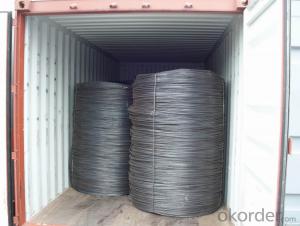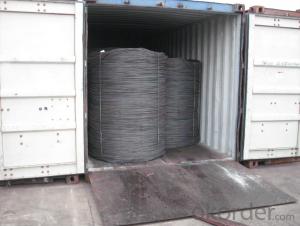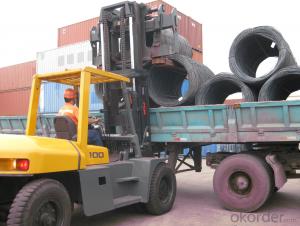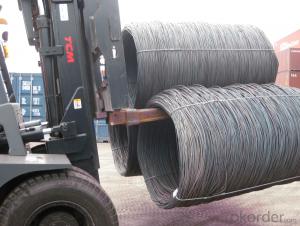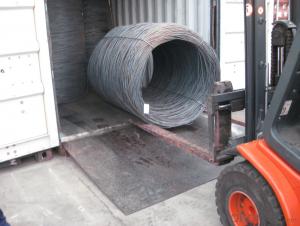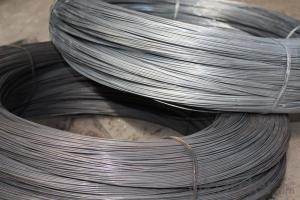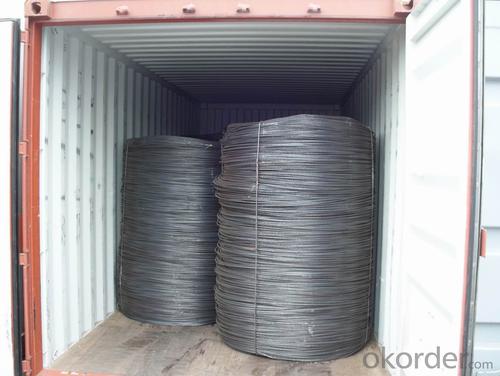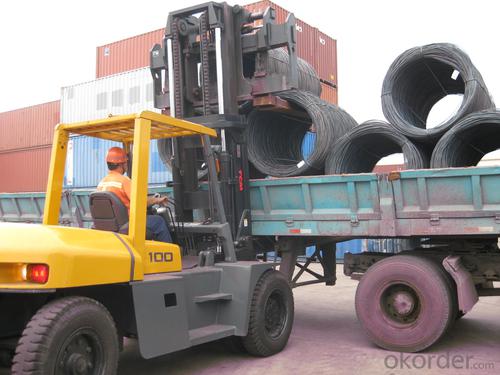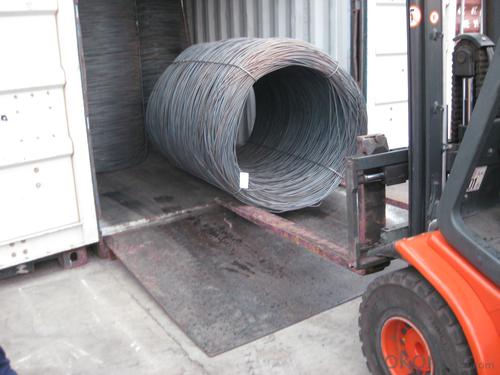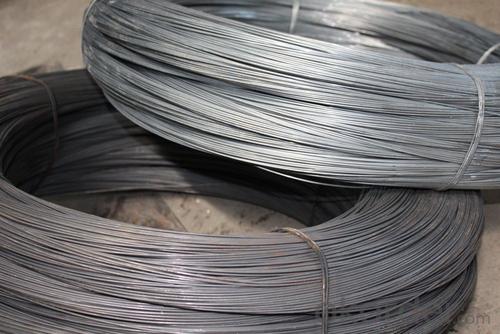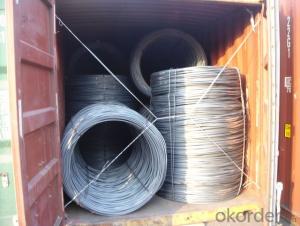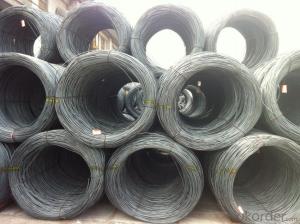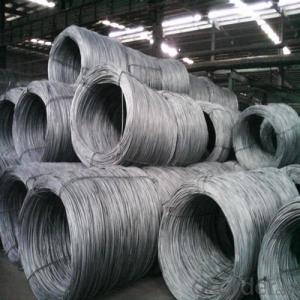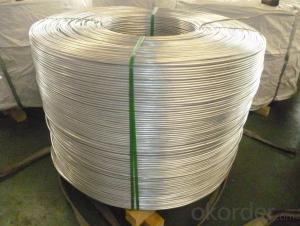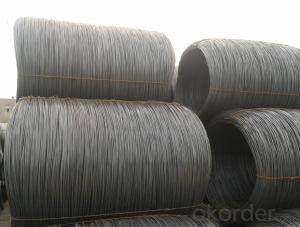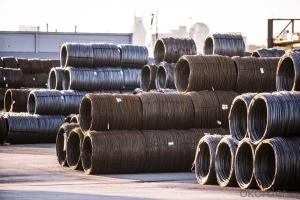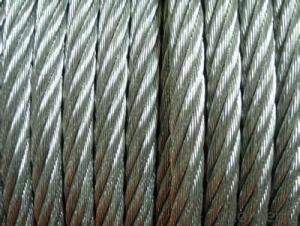SAE1006Cr Carbon Steel Wire Rod 9.5mm for Welding
- Loading Port:
- Shanghai
- Payment Terms:
- TT OR LC
- Min Order Qty:
- 100 m.t
- Supply Capability:
- 30000 m.t/month
OKorder Service Pledge
OKorder Financial Service
You Might Also Like
Specification
Description of SAE1006Cr Carbon Steel Wire Rod 9.5mm for Welding:
OKorder is offering Color Coated Steel Coil Prepainted Steel Coil at great prices with worldwide shipping. Our supplier is a world-class manufacturer of steel, with our products utilized the world over. OKorder annually supplies products to European, North American and Asian markets. We provide quotations within 24 hours of receiving an inquiry and guarantee competitive prices.
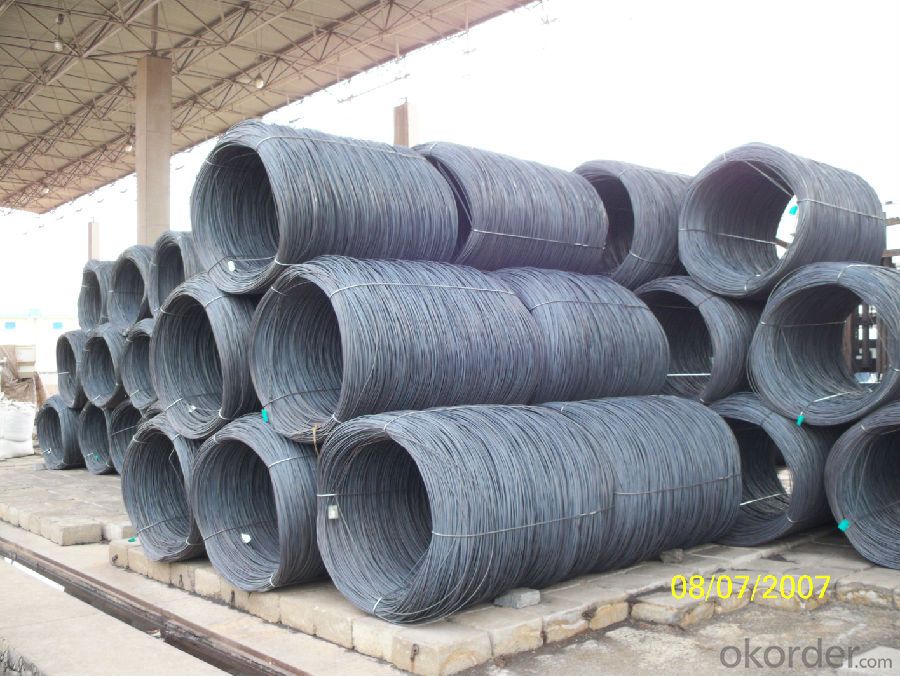
Applications of SAE1006Cr Carbon Steel Wire Rod 9.5mm for Welding:
Color Coated Steel Coil Prepainted Steel Coil are ideal for structural applications and are widely used in the construction of buildings and bridges, and the manufacturing, petrochemical, and transportation industries.
Main Product Features of SAE1006Cr Carbon Steel Wire Rod 9.5mm for Welding:
· Premium quality
· Prompt delivery & seaworthy packing (30 days after receiving deposit)
· Corrosion resistance
· Can be recycled and reused
· Mill test certification
· Professional Service
· Competitive pricing
Specifications of SAE1006Cr Carbon Steel Wire Rod 9.5mm for Welding:
PPGI:
1, Introduction: Color coated steel coils(sheets), i. E. PPGI, also called prepainted steel coils(sheets), are made of galvanized steel coils(sheets) with polymer coatings as surface. It's a new enclosure material and building board with characteristics of light-weighted, heat preserved&insulated, easily installed with bright colors.
2, Production Process: Pretreatment(Degreasing)_Drying_Chromating_Paint Basic Oil_Cooling_Drying_Color Coating_Cooling_Film-covering_Rolling Up
3, Characteristics:
Good at corrosion resistence. Besides zinc coating of the basic plate of galvanized steel sheet, the color coating as the surface has double lifetime to ensure better anticorrosion effect.
With excellent cold bending molded manufacturablity, PPGI products can be processed or directly used as final product. As being light-weighted and conveniently transported, they're widly used to replace wood to save energy.
4.There're thousands of colors can be chosen as per different application. Any color plays well in decoration.
No pollution with high recycling rate, PPGI coils and sheets are strongly recommended as enviroment-friendly products by the government.
5, eye bands and 4 circumferential bands in steel, galvanized metal fluted rings on inner and outer edges, galvanized.
| commodity | SAE1006Cr Carbon Steel Wire Rod 9.5mm for Welding |
| Techinical Standard: | JIS G3302-1998, EN10142/10137, ASTM A755 |
| grade | Q195,Q215,Q235,SAE1006,SAE1008 SAE1006Cr |
| Types: | Mesh welding |
| Base metal | galvanized, galvalume, cold rolled steel |
| Thickness | 0.14-1.0mm(0.16-0.8mm is the most advantage thickness) |
| Width | 610/724/820/914/1000/1200/1219/1220/1250mm |
| Type of coating: | PE, SMP, PVDF |
| Zinc coating | Z60-150g/m2 or AZ40-100g/m2 |
| Top painting: | 5 mic. Primer + 15 mc. R. M. P. |
| Back painting: | 5-7 mic. EP |
| Color: | According to RAL standard |
| ID coil | 508mm610mm |
| Coil weight: | 2--3MT |
| Package: | Properly packed for ocean freight exportation in 20'containers |
| Application: | Industrial panels, roofing and siding for painting/automobile |
| Price terms | FOB, CFR, CIF |
| Payment terms | 20%TT in advance+80% TT or irrevocable 80%L/C at sight |
| delivery time | 25 days after recepit of 20% TT |
| Remarks | Insurance is all risks |
| MTC 3.1 will be handed on with shipping documents | |
| We accept SGS certificatation test |
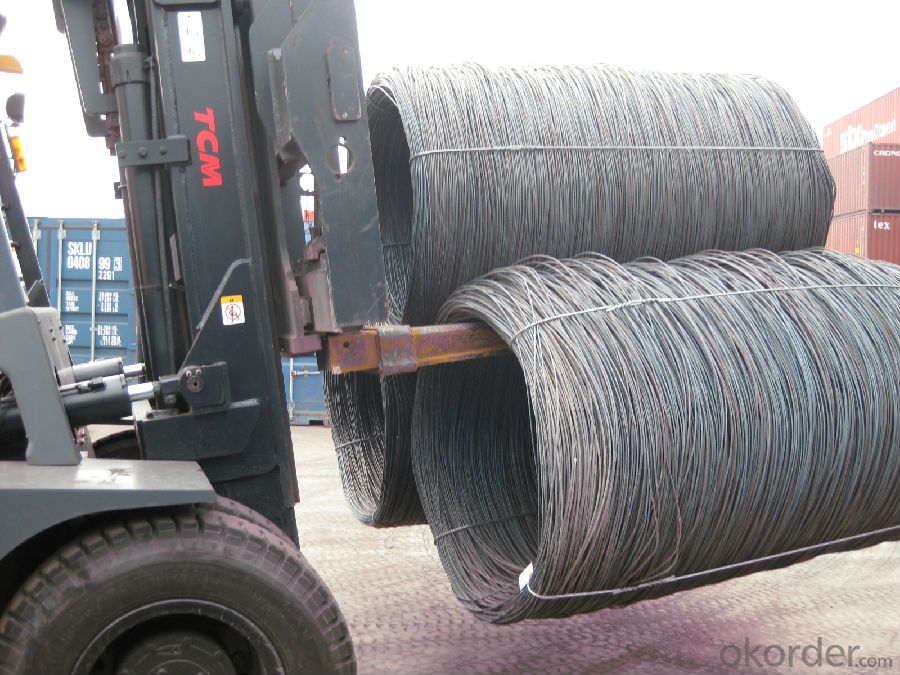
FAQ of SAE1006Cr Carbon Steel Wire Rod 9.5mm for Welding:
Q1: Why buy Materials & Equipment from OKorder.com?
A1: All products offered byOKorder.com are carefully selected from China's most reliable manufacturing enterprises. Through its ISO certifications, OKorder.com adheres to the highest standards and a commitment to supply chain safety and customer satisfaction.
Q2: How do we guarantee the quality of our products?
A2: We have established an advanced quality management system which conducts strict quality tests at every step, from raw materials to the final product. At the same time, we provide extensive follow-up service assurances as required.
Q3: How soon can we receive the product after purchase?
A3: Within three days of placing an order, we will begin production. The specific shipping date is dependent upon international and government factors, but is typically 7 to 10 workdays.
Q4: What makes stainless steel stainless?
A4: Stainless steel must contain at least 10.5 % chromium. It is this element that reacts with the oxygen in the air to form a complex chrome-oxide surface layer that is invisible but strong enough to prevent further oxygen from "staining" (rusting) the surface. Higher levels of chromium and the addition of other alloying elements such as nickel and molybdenum enhance this surface layer and improve the corrosion resistance of the stainless material.
Q5: Can stainless steel rust?
A5: Stainless does not "rust" as you think of regular steel rusting with a red oxide on the surface that flakes off. If you see red rust it is probably due to some iron particles that have contaminated the surface of the stainless steel and it is these iron particles that are rusting. Look at the source of the rusting and see if you can remove it from the surface.
- Q: What are the main factors influencing the choice of steel wire rod order warranty claims process?
- The main factors influencing the choice of steel wire rod order warranty claims process can vary depending on various aspects. Firstly, the quality of the steel wire rod plays a significant role in determining the warranty claims process. If the wire rod is of high quality and meets the required standards, then the warranty claims process may be less frequent and straightforward. On the other hand, if the wire rod has inherent flaws or defects, it is more likely to result in warranty claims, and the process may be more complex. Secondly, the terms and conditions of the warranty provided by the supplier or manufacturer can greatly influence the choice of the warranty claims process. The duration of the warranty, the coverage provided, and any limitations or exclusions can impact the decision-making process. If the warranty offers comprehensive coverage and is backed by a reputable supplier, it may instill confidence in the buyer, making them more inclined to choose that particular warranty claims process. Furthermore, the availability and efficiency of customer support and after-sales service are important factors in deciding the warranty claims process. A prompt and responsive customer support team can expedite the claims process, provide necessary guidance, and address any concerns or queries from the buyer. This level of support can significantly influence the choice of the warranty claims process, as it ensures a smoother and more satisfactory experience for the buyer. Additionally, the reputation and track record of the supplier or manufacturer can also impact the decision-making process. Buyers are more likely to choose a warranty claims process from a trusted and reliable supplier with a history of honoring their warranty obligations promptly and fairly. This factor can provide peace of mind to the buyer and increase their confidence in choosing a particular warranty claims process. Lastly, the cost and convenience of the warranty claims process can also influence the choice. If the process is cost-effective and convenient for the buyer, they may be more inclined to choose that particular warranty claims process. This can include factors such as the ease of filing a claim, the time taken for resolution, and any associated costs or deductibles. Overall, the main factors influencing the choice of steel wire rod order warranty claims process revolve around the quality of the product, the terms and conditions of the warranty, the availability of customer support, the reputation of the supplier, and the cost and convenience of the process.
- Q: What are the different types of surface coatings available for steel wire rod?
- There are several different types of surface coatings available for steel wire rods. These coatings serve various purposes such as protection against corrosion, enhancing the wire's appearance, and improving its performance. Here are some of the most common types of surface coatings used for steel wire rods: 1. Zinc Coating: Zinc coatings are widely used to protect steel wire rods from corrosion. The most common zinc coating technique is hot-dip galvanizing, where the wire rod is immersed in molten zinc. This coating provides excellent corrosion resistance and can withstand harsh environmental conditions. 2. Phosphate Coating: Phosphate coatings are applied to steel wire rods to improve their adhesion properties and provide a base for subsequent coatings or paints. These coatings enhance the wire's corrosion resistance and improve its ability to bond with other materials. 3. Polymer Coating: Polymer coatings are applied to steel wire rods to provide a protective barrier against corrosion and physical damage. These coatings are often used in applications where the wire needs to withstand harsh conditions or have increased durability. Polymer coatings can be customized to have specific properties such as abrasion resistance, chemical resistance, or UV resistance. 4. Epoxy Coating: Epoxy coatings are commonly used to protect steel wire rods that will be exposed to corrosive environments. These coatings provide excellent resistance to chemicals, moisture, and abrasion. Epoxy coatings are often used in industries such as marine, oil and gas, and automotive. 5. PVC Coating: PVC (Polyvinyl Chloride) coatings are applied to steel wire rods to provide insulation and protection against corrosion. These coatings are commonly used in electrical applications where the wire needs to be electrically insulated and protected from environmental factors. 6. Powder Coating: Powder coatings are applied to steel wire rods through a process of electrostatically charged powder particles that adhere to the wire's surface. These coatings offer excellent durability, resistance to corrosion, and can be customized to have different colors or finishes. It is important to choose the appropriate surface coating for steel wire rods based on the specific application requirements and the environment in which the wire will be used. Each type of coating has its own advantages and limitations, so careful consideration should be given to selecting the most suitable coating for the intended purpose.
- Q: How is steel wire rod used in the manufacturing of wire forms for ventilation systems?
- Wire forms for ventilation systems commonly utilize steel wire rods due to their excellent strength and durability. Wire forms are essentially wire components that are bent or twisted and used to support and shape various parts of a ventilation system. In the manufacturing process, steel wire rods are initially selected based on their specific mechanical properties, such as tensile strength and flexibility, to ensure they can endure the demanding conditions of a ventilation system. These wire rods are typically made from low carbon steel, which provides a good balance of strength and malleability. Subsequently, the steel wire rods undergo a series of steps in the manufacturing process, including cleaning, hot rolling, and cooling, to shape them into the desired wire form. The rods are cleaned first to eliminate any impurities or scale that may affect the final product's quality. They are then hot rolled to decrease their diameter, increase their length, and enhance their mechanical properties. Following the hot rolling process, the steel wire rod is cooled and prepared for transformation into wire forms for ventilation systems. Additional processes, such as annealing or surface treatments, may be applied to the wire rod depending on the system's specific requirements in order to improve its corrosion resistance. Once the steel wire rod has been processed, it is bent, twisted, or formed into various shapes to create wire forms for ventilation systems. These wire forms serve various purposes, including supporting air ducts, securing filters, or forming grille components. The use of steel wire rod in the manufacturing of wire forms ensures that the resulting components are strong, durable, and capable of withstanding the harsh conditions typically associated with ventilation systems. The high tensile strength and flexibility of steel wire rod make it an ideal material choice for these applications, guaranteeing that the wire forms can effectively support and shape the ventilation system components for optimal performance and longevity.
- Q: How does the corrosion resistance of steel wire rod vary with different wire drawing processes?
- The corrosion resistance of steel wire rod can vary with different wire drawing processes. Factors such as the surface finish, the presence of residual stress, and the alteration of the microstructure during the drawing process can influence the corrosion resistance of the wire rod. For example, wire rods that undergo a high-quality wire drawing process with proper cleaning and lubrication techniques can have improved corrosion resistance compared to those subjected to a less controlled or inadequate drawing process. Additionally, the wire drawing process can affect the formation of oxide layers on the surface of the wire rod, which can further impact its corrosion resistance. Overall, the specific wire drawing process employed can significantly impact the corrosion resistance of steel wire rod.
- Q: How are steel wire rods used in the manufacturing of concrete reinforcements?
- Steel wire rods are commonly used in the manufacturing of concrete reinforcements due to their high strength and durability. These rods are typically made from carbon steel, which is known for its excellent tensile strength. In the production of concrete reinforcements, steel wire rods are first processed through a series of mechanical and heat treatments to enhance their properties. This includes processes such as drawing, annealing, and quenching, which result in a material with improved hardness and ductility. Once the steel wire rods are prepared, they are then cut into desired lengths and shapes to suit the specific reinforcement requirements of the concrete structure. These rods are commonly used to manufacture various reinforcement products, such as wire mesh, welded wire fabric, and reinforcing bars (rebars). Wire mesh and welded wire fabric are typically used to reinforce concrete slabs, walls, and foundations. The mesh or fabric is laid within the concrete formwork, providing additional strength and preventing cracking or shifting of the concrete during curing and loading. Rebars, on the other hand, are used to reinforce concrete structures that require higher load-bearing capacities, such as columns, beams, and structural frames. The steel wire rods are typically bent and shaped into specific configurations, such as straight bars, U-shaped bars (stirrups), or spiral shapes, which are then embedded within the concrete structure. These rebars act as tension members, providing resistance against forces that may cause the concrete to crack or fail under load. Overall, steel wire rods play a crucial role in the manufacturing of concrete reinforcements by providing strength, durability, and flexibility to the concrete structures. Their high tensile strength helps to enhance the overall structural integrity and load-bearing capacity of the concrete, making it an essential component in modern construction practices.
- Q: What are the main factors influencing the choice of steel wire rod order payment method options?
- The main factors influencing the choice of steel wire rod order payment method options include the nature of the business relationship between the buyer and seller, the level of trust between the parties, the size and frequency of the orders, the financial capabilities of both parties, and the prevailing market conditions. Firstly, the nature of the business relationship plays a crucial role in determining the payment method. If the buyer and seller have a long-standing and trustworthy relationship, they may opt for more flexible payment methods such as open account or deferred payment terms. This is because they have established a level of trust and confidence in each other's ability to fulfill their obligations. Secondly, the size and frequency of the orders can influence the payment method options. For small or infrequent orders, cash in advance or letter of credit (LC) may be preferred as they provide security for the seller. On the other hand, for large or regular orders, open account or installment payments may be more suitable to facilitate smoother cash flows and reduce administrative burden. The financial capabilities of both the buyer and seller are also crucial factors. If the buyer has strong financial standing and a good credit history, they may be able to negotiate more favorable payment terms such as longer payment periods or reduced down payments. Similarly, if the seller has sufficient financial resources and can afford to extend credit, they may offer more flexible payment terms to attract customers. Lastly, prevailing market conditions can impact the choice of payment method. In a competitive market with multiple suppliers, buyers may have more bargaining power and can negotiate for more favorable payment terms. On the other hand, in a market with limited supply or high demand, sellers may have more leverage and can dictate the payment method. In conclusion, the choice of steel wire rod order payment method options is influenced by the nature of the business relationship, level of trust, size and frequency of orders, financial capabilities, and prevailing market conditions. It is important for both the buyer and seller to carefully evaluate these factors and select a payment method that best suits their needs and preferences.
- Q: How are steel wire rods used in the manufacturing of electrical conductors?
- The manufacturing of electrical conductors heavily relies on steel wire rods, which serve as a vital component. These rods are primarily utilized as the primary material for creating top-notch wires that find application in diverse electrical fields. Initially, steel wire rods undergo a series of processes to enhance their properties and make them suitable for electrical conduction. These processes usually involve cleaning, heating, and rolling. Cleaning eradicates any impurities or contaminants present on the rods' surface, while heating ensures that the steel becomes malleable, facilitating shaping. Rolling encompasses passing the rods through a set of rollers to achieve the desired shape and diameter. Once the steel wire rods are processed, they undergo further transformation into wires through a process called drawing. During this process, the rods are drawn through a series of dies, gradually reducing their diameter and increasing their length. Consequently, a long, continuous wire with a uniform diameter is formed. The wire resulting from steel wire rods boasts high conductivity and exceptional mechanical strength, rendering it suitable for various electrical applications. These wires are commonly employed in the production of power cables, electrical cables, and wiring harnesses. Functioning as the principal conductor, they facilitate the flow of electric current from one point to another. Furthermore, steel wire rods are also utilized in the production of stranded conductors. This process involves twisting together multiple steel wires to create a single conductor. Stranded conductors offer enhanced flexibility and mechanical durability, making them ideal for applications that necessitate frequent movement or bending, such as electrical appliances or automotive wiring. In conclusion, steel wire rods play a pivotal role in the manufacture of electrical conductors. Their conversion into high-quality wires establishes the groundwork for the production of a wide array of electrical components utilized across various industries.
- Q: What are the major players in the global steel wire rod market?
- ArcelorMittal, Nippon Steel Corporation, Tata Steel Ltd., POSCO, JFE Steel Corporation, Nucor Corporation, Steel Authority of India Limited (SAIL), EVRAZ plc, Gerdau S.A., and Sohar Steel LLC are among the key players in the global steel wire rod market. These companies are renowned manufacturers and suppliers of steel wire rod, which finds extensive application in industries like construction, automotive, and manufacturing. They possess a significant market share and maintain a strong presence in vital markets worldwide. To stay competitive, these industry leaders consistently invest in research and development to develop innovative products and enhance their production processes. They also prioritize strategic alliances, acquisitions, and expansion initiatives to broaden their market reach and fortify their position in the global steel wire rod market.
- Q: What are the different types of testing conducted on steel wire rod?
- The different types of testing conducted on steel wire rods include dimensional inspection, chemical composition analysis, mechanical property testing, surface quality examination, and non-destructive testing such as ultrasonic testing, magnetic particle inspection, and eddy current testing.
- Q: What are the common production processes for high carbon steel wire rod?
- Some common production processes for high carbon steel wire rod include hot rolling, pickling, cold drawing, annealing, and coating.
Send your message to us
SAE1006Cr Carbon Steel Wire Rod 9.5mm for Welding
- Loading Port:
- Shanghai
- Payment Terms:
- TT OR LC
- Min Order Qty:
- 100 m.t
- Supply Capability:
- 30000 m.t/month
OKorder Service Pledge
OKorder Financial Service
Similar products
Hot products
Hot Searches
Related keywords
